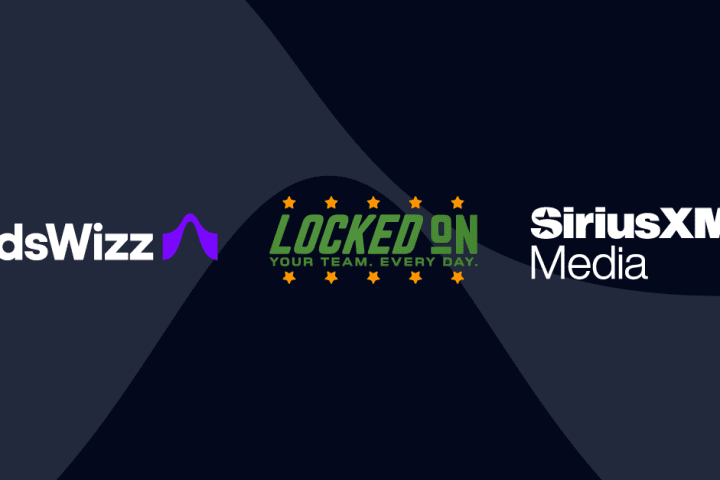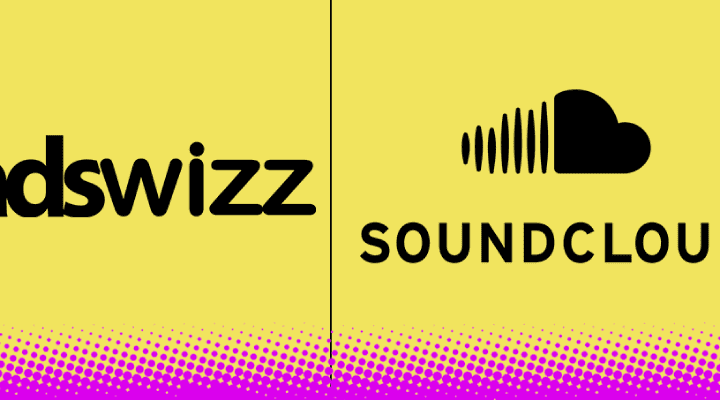Reprinted from Faultline Online Reporter in rethinkresearch.biz.
Bristol, United Kingdom (April 9, 2020) – Last week, we noted how Silicon Valley-based digital audio ad platform and Pandora subsidiary AdsWizz was working to upgrade its offering. The roll out of new features, alongside an optimistic whitepaper, suggested the company was prepping for a surge in business driven by a growing pool of podcast enthusiasts.
An interview this week with the company’s SVP of Global Demand, Pierre Naggar, confirmed our hunch. AdsWizz is doing all it can to make digital audio the next gold rush in advertising, despite the current shortfall in business due to the pandemic. Interestingly, this includes investing in improving the actual ads themselves, rather than the platform which delivers them to the consumer.
As previously noted, podcasts are a seemingly unstoppable new force in popular media. In just a few years they’ve gone from a devoted fringe pastime to an established form of mass culture, with 104 million Americans listening to podcasts on a monthly basis.
Naggar accepted that the industry is far off the $billions that is pumped into video advertising, but he was optimistic that there is still a lot more money to be spent. “There’s a gap between how many people are listening and how much advertisers are spending, and we’re predicting ad spend will eventually catch up with consumption, much like it did for video,” Naggar said. AdsWizz’s whitepaper predicts podcast ad spend to surpass $1 billion next year.
As a result, AdsWizz is investing to make sure that it can scale up its business model when required, as well as improving the service offered to ensure advertisers get their money’s worth.
The most recent product of this investment is ‘Dynamic Creatives’ a tool which allows advertisers to target their audience according to more granular categories such as location, local weather patterns, time of day and year and even the listener’s music taste.
Another example of this investment in the delivery of ads is the company’s ‘Shake Me’ feature, which was developed three years ago. This was the outcome of research in how to interact with those listening to digital audio on their mobiles, currently around
60% to 70% of all listeners.
AdsWizz found that encouraging a physical response from listeners was an effective way of engaging them with an ad. As such, it developed ‘Shake Me’, which allows listeners to receive goodies in return for shaking their phone.
Naggar also revealed that AdsWizz is looking into voice interactive ads, although this was completely detached from the work of Instreamatic, another Pandora subsidiary working on voice interactivity within video ads.
Other R&D projects include the company’s studies of how to best build an audio advert for podcasts, as opposed to radio. After testing focus groups, the findings are published in creative guidelines. Having no music in the background for podcast adverts was one example Naggar gave.
We put it to Naggar that this was perhaps beyond the requirements of a programmatic advertising platform, but he assured us that AdsWizz’s efforts to develop new ad formats and improve delivery are appreciated by many of its clients. Much of the work surrounding R&D has been pushed by the company’s co-founder and CTO, Bruno Nieuwenhuys.
We next recapped on the new updates announced last week. The first is coined easy inventory discovery, which automates the process of buying ad space in podcasts according to specifications.
Naggar said that this allows advertisers to benefit from the inevitable long tail of podcasts. More popular shows are often sold out well in advance and are more expensive to advertise on and AdsWizz has streamlined the process for agencies to scale their purchases of podcasts of a certain type.
One of the means by which AdsWizz categorizes podcasts is PodScribe, the company’s proprietary speech-to-text software. Naggar assured Faultline that aside from simple transcription, PodScribe accounts for tone and wider context of the words. AdsWizz
then passes the transcription over to Comscore, which applies brand safety categories to the content. Examples of these categories include adult content, alcohol, crime, violence, drugs, gambling, terrorism and user-generated content (UGC).
In last week’s Faultline, we noted that PodScribe didn’t seem newsworthy, as it appeared to have been launched in October. Naggar explained that this was the beta launch with a select few clients, whereas last week’s news marked it opening to all AdsWizz users.
Naturally, we couldn’t help but ask how the current pandemic is affecting the state of play at AdsWizz. Naggar noted that digital audio ads have been affected much like any other advertising channel. AdsWizz has experienced the all too common pattern of advertisers pausing and cancelling campaigns, while consumption of media has increased.
He said much of the ads still running were for the sectors that benefit from lockdown – things like online retail and education platforms – whereas sectors like food and the automotive industry were putting much of their content on hold.
At the same time, consumption of media has increased. In the case of podcasts, this has been an increase of between 25% to 30% since the pandemic hit worldwide a few weeks ago, with more users accessing their podcasts by smart speakers, too.
But does this increase in consumption time offset the downturn in revenue from cancelled ads? Naggar was hesitant to give a definitive answer, saying that it was a possibility that the increased exposure could result in larger advertising spends, but for now he did not have the figures to prove so. He noted that March saw a decrease in activity for AdsWizz but was still overall “a good month,” and expected that April will see a further reduction in activity.
Yet Naggar was eager to strike a positive note. He noted that amid many things coming to a standstill, it has become much easier for AdsWizz to “reach out to clients and customers we don’t usually work with.” A less busy, more receptive ad industry has opened a lot of conversations that weren’t happening beforehand, according to Naggar.
Speaking of clients and customers, we asked about AdsWizz’s relationship with Spotify. As suspected, Pandora acquiring AdsWizz in 2018 essentially ended any chances of listing the streaming giant as a customer. Naggar noted that AdsWizz had worked with Spotify before the Pandora acquisition.
Yet Naggar was keen to point out that Pandora’s model is better suited to AdsWizz’s business. Advertising is a much smaller slice of Spotify’s overall revenue compared to Pandora, which makes up most of its revenue through advertising.
About Faultline
Faultline is a merger of 3 industry-renowned publications: Rethink’s Faultline, with Rider Research’s Online Reporter and Internet TV Reporter. The combined result is a weekly service spanning topics including OTT video
technologies, broadband, WiFi, devices, advertising, content, and video formats – studying disruptive emerging market trends. Faultline is published by Rethink Technology Research Ltd. To learn more about Faultline, please visit http://www.rethinkresearch.biz/product/faultline



